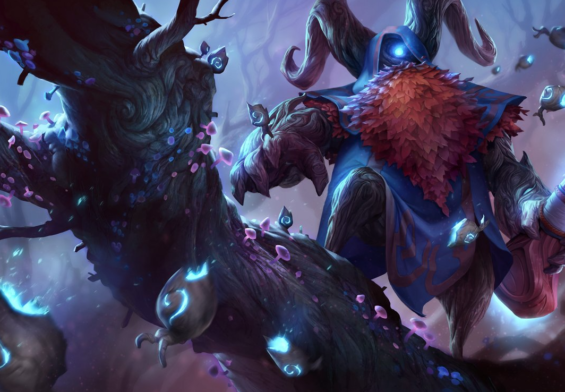Compiled by ArtiZen Editor
From 2100-1400 BCE, When Aryans, the ‘superior’ Indo-Iranian racial group residing in central and eastern Europe, were expanding tribal territories aggressively across the West and South Asian steppes, the slavery society and dynasty Shang in East Asia was in its prime time with the current ruling of an intelligent, capable King: Wu Ding.
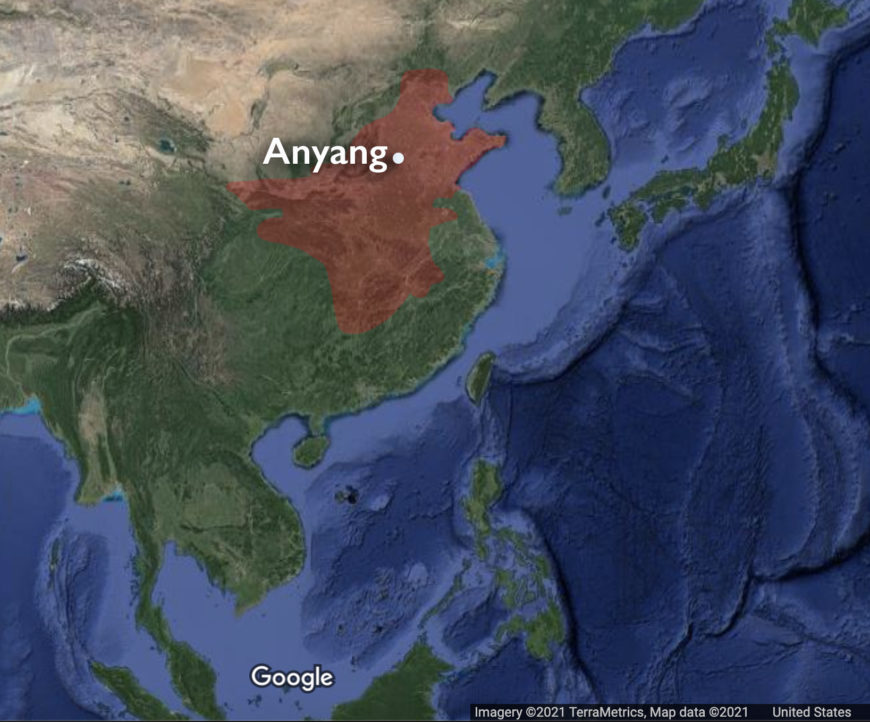
King Wu Ding cultivated the allegiance of neighboring tribes by marrying one woman from each of them. Fu Hao, who was believed to be one of the King’s 64 wives, entered the royal household through such a marriage and took advantage of the semi-matriarchal slave society to rise through the ranks to become one of King Wu Ding’s three consorts.
Fu Hao Tomb and Biography
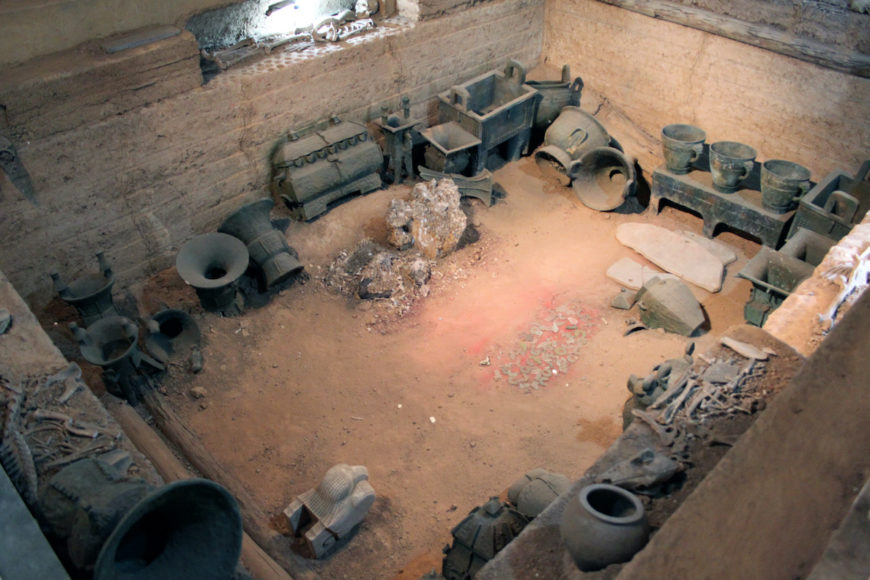
Fu Hao, the Chinese text means “Good Wife”, died in 1200 B.C. and was the second highest rank wife of King WuDing and also his favorite wife among his three consorts. Fu Hao also served as a military general and high priestess of the Shang Dynasty. However, minimal evidence detailing Fu Hao’s life and military achievements survived the Shang dynasty, and the records may have perished over the course of over four thousand of years.
The Tomb of Fu Hao was unearthed intact in 1976 at Yinxu District, An Yang City, Henan Province in China. It’s one of the most important archeological discoveries with the most lavish buried treasures from 4200 years ago. As the queen and military general of the Wu Ding Shang Dynasty, from her tomb excavated an antique collection of 755 Jade objects, 564 bone objects, 468 bronze objects, 63 stone objects, 5 ivory objects, 11 pottery objects, 7000 pieces of cowry shell, 6 dogs, and 16 human sacrifices, etc. Inside the tomb pit was evidence of a wooden chamber 5 meters long, 3.5 meters wide, and 1.3 meters high containing a lacquered wooden coffin that has since completely disintegrated. The tomb of Fu Hao provides the most insight into her life, her relationship with the royal family, and her military role and achievements, as the objects she was buried with provide clues to her activities and interests.
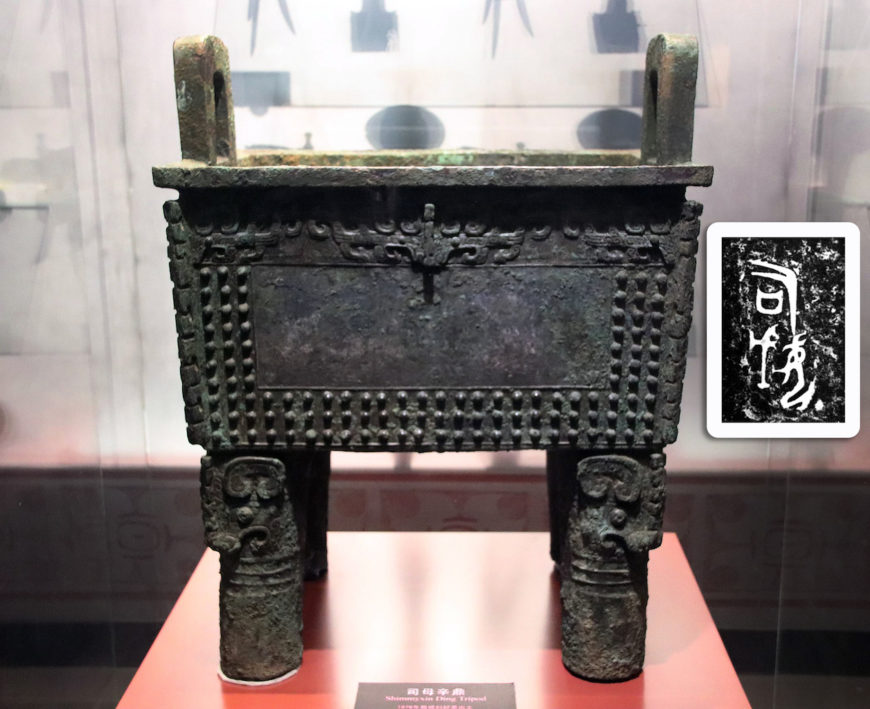
It’s said that King Wu Ding loved and cherished Fu Hao so much that he wanted to inquire about divination from her even after her death. So instead of interring Fu Hao in the official royal family cemetery, Wu Ding buried her only 200 meters away from the Shang Palace where he lived. Because of this usual location, lady Hao’s tomb is the only royal Shang tomb to have been left unnoticed and unlooted throughout thousands of years, giving unique insights into her life and the burial practices of the time.
Based on archaeological research and the assortment of weapons in her tomb, Fu Hao may come from the border or the Steppe, a nomadic warlike tribe. So that Fu Hao learned hunting, archery and horsemanship as well as some war strategies. The other two wives of King Wu Ding were Fu Jing and Fu Shi. Fu Jing was the primary queen while Fu Hao was the secondary queen. Fu Hao was also the mother of Prince Zu Ji.
King Wu Ding put Fu Hao in the highest prominent position of chief priestess to host ritual matters in the Shang Dynasty. Priestess’s words and divination conclusion have a tremendous influence on the government and their daily affairs. It attests to her authority, sense of judgment, and trust in the King. The Shang Dynasty had two most important activities: ritual matters and battles; lady Hao played extraordinary roles in both at that time.
Fu Hao owned her land. As Fu Hao offered the King remarkably valuable tributes many times and had fought wars and won campaigns multiple times, she was granted a suzerainty under her name to appraise her unique contributions to the Shang administration.
Military Role
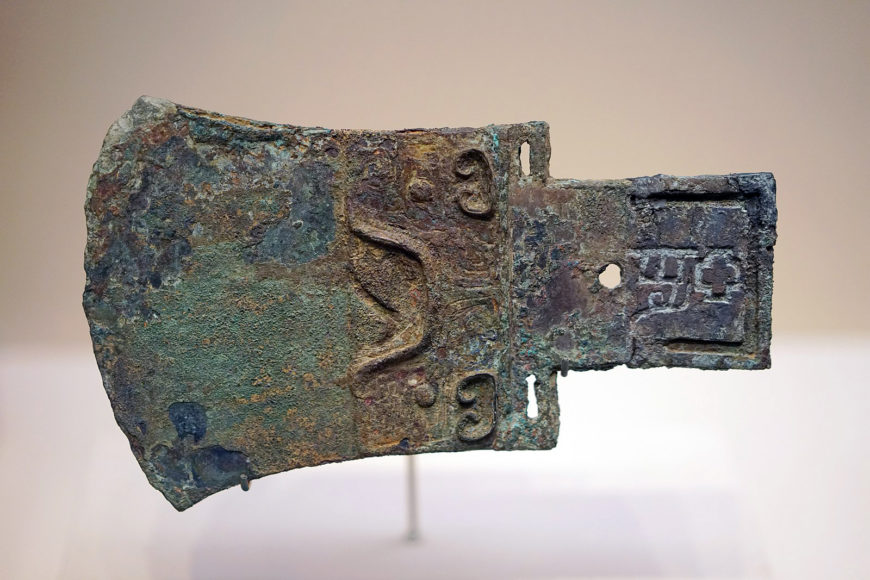
Unearthed oracle bones artifacts from Fu Hao’s tomb carry inscriptions scribing Fu Hao’s daily life and based on the presence of weapons in her tomb, it can be determined that Fu Hao was a general in charge of several military campaigns for the Shang Dynasty.
In her military role, she was responsible for conquering enemies and neighbors of the Shang Dynasty. The Tufang had fought against the Shang for generations until they were finally defeated by Fu Hao in a single decisive battle. Further campaigns against neighboring tribes Yi, Qiang, and Ba followed; the latter is particularly remembered for being the earliest record large-scale ambush in Chinese history. With up to 13000 soldiers and important generals serving under her, she was the most powerful Shang general of her time. This highly unusual status is confirmed by the many weapons, including great battle axes unearthed in her tomb. While Fu Hao’s achievements were notable and unique, other women in this period were also active in military roles; Oracle Bones also revealed records of at least six hundred women participating in the military during this era.
Oracle Bones
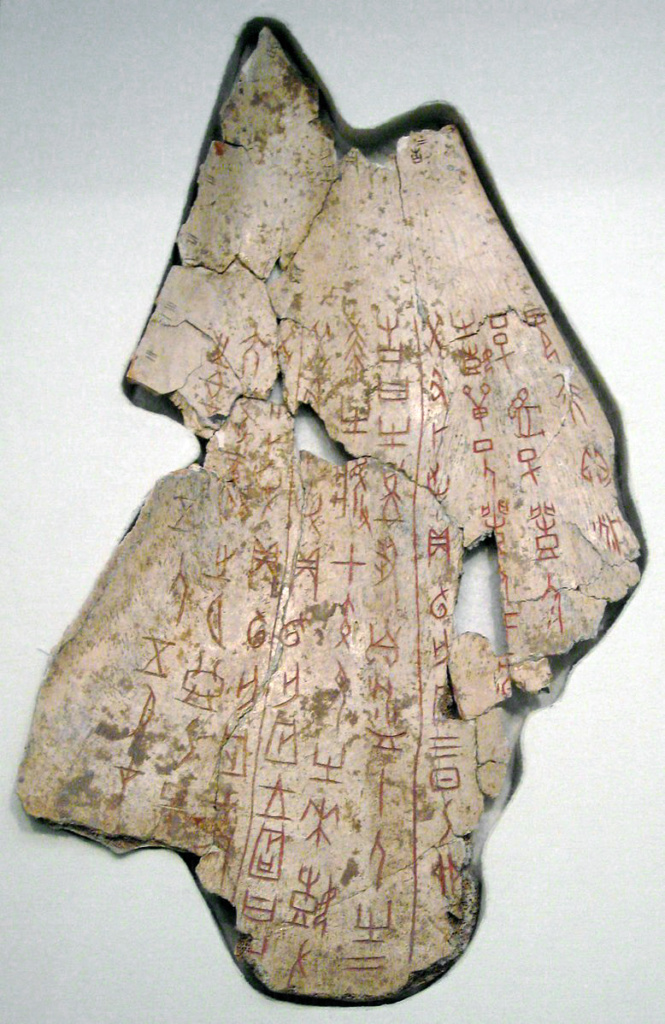
Many of the oracle bones have been reassembled from fragments, giving us invaluable information about Shang society and religion during the late Shang 1200-1000 B.C.E, especially the hopes, fears, and preoccupations of the late Shang Kings.
Beginning with King Wu Ding, the late Shang kings attempted to communicate with their ancestors and gods through oracle bone divination to predict the future. They used turtle plastrons and bovine scapulae that were polished and drilled with small hollows on one side. When heat was applied to the hollows with a hot poker, the bones would crack on the other side. During the divination ceremony, the diviner spoke a charge/proposition that conveyed the King’s concerns or something he needed to know. The charge was spoken in pairs, in the positive and the negative such as “Fu Hao’s childbirth will be auspicious” and “Fu Hao’s childbirth will not be auspicious”. With each charge, the hot poker was applied to a hollow and the bone cracked making a dramatic “puck” sound. The King or the diviner then read and interpreted the cracks. After the ritual was over, a scribe engraved a record of the divination on the bone, including the date, name of the diviner, the topic of divination, and sometimes a prognostication and a result.
Shang Kings divined numerous topics of concern from sacrifices, military campaigns, and hunting expeditions to weather, agriculture, sickness, dreams, and childbirth. King Wu Ding, who is responsible for the majority of divination records, frequently divined about Fu Hao, both while she was alive and after her death when she became a royal ancestor.
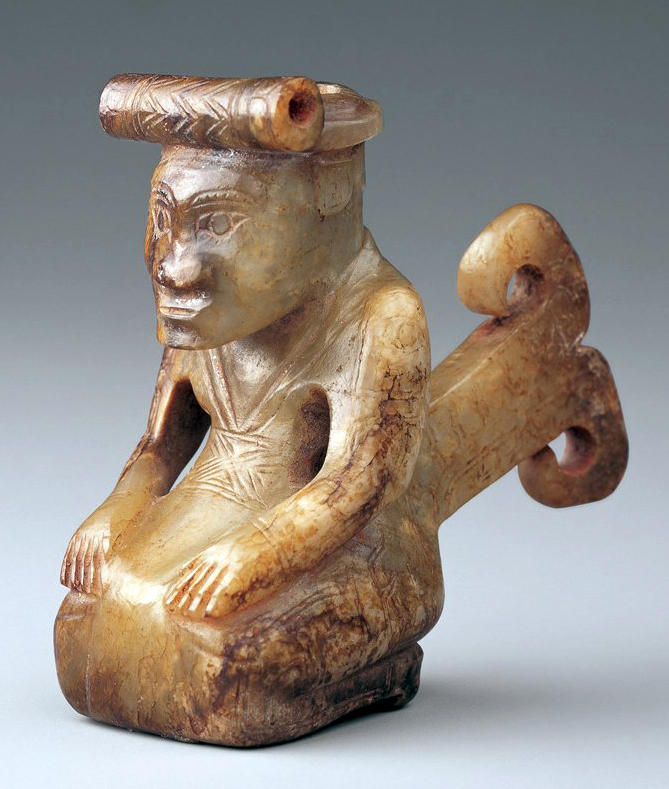
Matriarchal society was formed and lasted from 50,000 to 4000 years ago, exactly the years of Fu Hao and the Wu Ding Shang Dynasty and later entering the patriarchal age. Fu Hao’s achievement and unusually high marital status not only represented the tailwind influence of a matriarchal society but also reflected women’s iron will and achievement in ancient times.
Fu Hao was not only a mother, wife, and daughter who put her family’s agendas before her own needs, but also a talented and highly-revered leader, visionary, and practitioner in government and military affairs.
To the first female hero and commander-in-chief from Chinese antiquity, and all the women role models in human history!
References:




